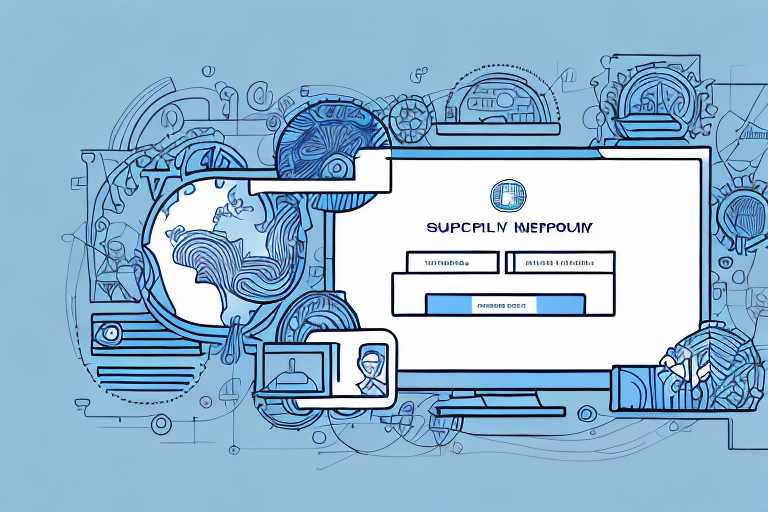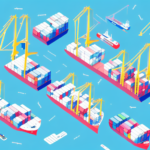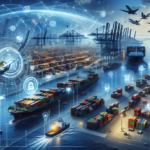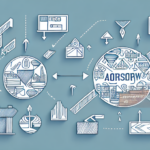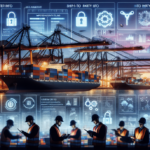Streamlining Customs Entry for an Efficient Supply Chain
In today's global economy, a streamlined customs entry process is crucial for ensuring the efficient movement of goods across borders. By understanding the fundamentals of customs entry, recognizing common challenges, and emphasizing the importance of optimization, businesses can gain significant advantages and maintain a competitive edge.
Understanding the Basics of Customs Entry
Customs entry involves the submission of necessary documentation, payment of duties and taxes, and inspection of goods by customs officials before they can enter a foreign country. This process can be intricate and time-consuming, engaging multiple stakeholders such as importers, shipping companies, and customs authorities. A comprehensive understanding of this process is essential for effective streamlining.
The type of goods being imported plays a pivotal role in the customs entry process. For instance, hazardous materials or controlled substances may require additional permits or inspections. It is vital to research and comprehend any specific regulations or requirements applicable to your products to ensure compliance and avoid delays.
Additionally, customs entry may involve various fees and taxes, including import duties, value-added taxes (VAT), and excise taxes. Incorporating these costs into your import strategy is essential, as they can significantly affect the overall pricing of your goods.
Common Challenges Faced in Customs Entry
Businesses frequently encounter several challenges in the customs entry process, such as:
- Delays in customs clearance: Resulting from inefficient processes or incomplete documentation.
- Incorrect documentation: Leading to shipments being rejected or held at customs.
- Regulatory changes: Constantly evolving customs regulations can make compliance difficult.
These challenges can lead to significant setbacks, negatively impacting a company's profitability and reputation.
The Importance of Streamlining Customs Entry for Supply Chain Efficiency
Optimizing the customs entry process is paramount for maintaining an efficient supply chain. Benefits include:
- Reduced delays and errors: Enhancing the speed and accuracy of customs clearance.
- Improved communication: Facilitating better interactions with customs officials.
- Cost savings: Minimizing time and resources required for clearing goods.
According to a 2023 ShipScience research report, businesses that streamlined their customs processes saw a 25% increase in supply chain efficiency, translating to higher customer satisfaction and increased profit margins.
Benefits of Streamlining Customs Entry for Your Business
Streamlining your customs entry process offers numerous advantages:
- Cost Reduction: Lowering expenses related to customs duties, taxes, and fees.
- Faster Delivery Times: Ensuring quicker shipment clearance and delivery.
- Enhanced Supply Chain Visibility: Providing real-time tracking and monitoring of shipments.
- Compliance Assurance: Staying compliant with evolving regulations to avoid penalties.
By implementing streamlined processes, businesses can maintain a positive reputation and foster customer loyalty, ultimately leading to sustained growth.
How to Start Streamlining Your Customs Entry Process
Begin by identifying areas that require improvement within your customs entry workflow. Key steps include:
- Review Documentation: Ensure all necessary paperwork is accurate and complete.
- Track Shipment Progress: Utilize tracking systems to monitor the status of shipments in real-time.
- Enhance Communication: Foster effective communication with customs officials and stakeholders.
Establishing clear protocols and procedures is essential. This can be achieved through:
- In-house training programs.
- Outsourcing to customs experts.
- Implementing industry-standard software solutions.
Staying updated with the latest regulations is also critical. Regularly review government websites, attend industry conferences, and participate in seminars to remain informed about regulatory changes.
Continuous evaluation and assessment of your customs entry process are necessary to identify further improvement opportunities. Gather feedback from employees, customers, and customs officials, and analyze relevant data and metrics to refine and optimize your processes consistently.
Tools and Technologies to Improve Customs Entry Processes
Several tools and technologies can help businesses streamline their customs entry processes:
- Electronic Data Interchange (EDI): Facilitates the electronic exchange of documents between businesses and customs authorities.
- Automated Manifest Systems (AMS): Automates the submission of shipment data to customs.
- Cargo Tracking Software: Provides real-time visibility into shipment locations and statuses.
Additionally, utilizing customs brokers and freight forwarders can offer expertise in navigating complex customs regulations, ensuring all documentation is accurate, and providing guidance on tariff classifications and duty rates.
Best Practices for Achieving a Smooth Customs Entry Experience
To ensure a seamless customs entry experience, businesses should adhere to the following best practices:
- Maintain Accurate Documentation: Ensure all paperwork is complete and correct to prevent delays.
- Ensure Compliance: Stay informed about and adhere to relevant laws and regulations.
- Properly Classify Goods: Accurately determine the tariff classification, origin, and value of goods.
- Effective Communication: Maintain transparent and consistent communication with all stakeholders.
Proper classification can help avoid delays, penalties, and other issues arising from incorrect or incomplete information. Consulting with customs brokers or trade specialists can aid in accurate classification.
Case Studies: Real-Life Examples of Successful Customs Entry Optimization
Several companies have successfully optimized their customs entry processes, resulting in faster delivery times, reduced costs, and improved customer satisfaction. Notable examples include:
- Amazon: Implemented advanced tracking and automated documentation systems to enhance efficiency.
- IKEA: Streamlined their supply chain by collaborating closely with customs officials and utilizing EDI systems.
- FedEx: Leveraged technology and expertise to expedite customs clearance and reduce transit times.
For instance, a small e-commerce business partnered with a customs broker and adopted automated systems for data entry and compliance checks. This collaboration significantly reduced clearance times and saved on fees, enabling the company to offer faster shipping options and boost sales.
Future Trends in Customs Entry and Supply Chain Management
Staying informed about future trends is essential for businesses aiming to maintain efficient customs entry processes:
- Automation and Artificial Intelligence: These technologies can automate repetitive tasks, reduce errors, and identify potential issues proactively.
- Sustainability and Ethical Practices: Increasing consumer demand for transparency and accountability requires businesses to ensure their customs processes are not only efficient but also sustainable and ethical.
- Regulatory Evolution: Ongoing changes in customs regulations necessitate continuous adaptation and compliance.
Embracing these trends will help businesses remain competitive and adapt to the evolving global market.
In conclusion, streamlining customs entry is vital for maintaining an efficient supply chain and staying competitive in today's global market. By understanding the basics, identifying improvement areas, and leveraging appropriate tools and technologies, businesses can optimize their customs entry processes and enjoy numerous benefits. Additionally, staying abreast of future trends ensures that businesses remain agile and prepared for ongoing changes in the industry.
For more insights and solutions on optimizing your customs entry process, visit ShipScience.















